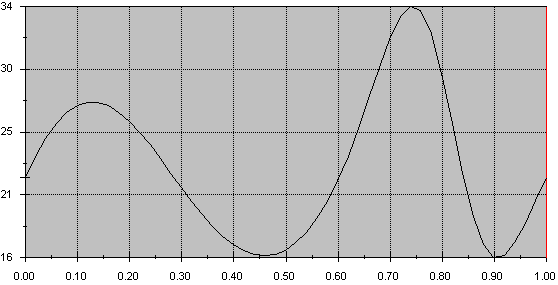The following example illustrates the relationship between the torque required by a constant speed rotary motor applied to a rotating link within a mechanism and the reflected load inertia. The movement of the mechanism affects the reflected load inertia.
This example uses a mechanism consisting of concentrically mated links. A constant speed rotary motor is applied to the left link as shown. There is no friction or gravity in this model.

| Motor Torque at the Left Link vs. Time |
|---|
 |
| Reflected Load Inertia vs. Time |
|---|
 |
As the rotary motor turns, the mated links change position. Consequently the torque required by the motor to turn the link at constant speed varies with the rotation of the link. The rotary motor has to apply either a positive or negative torque to maintain a constant rotational speed of the link. The corresponding reflected load inertia also varies with link position, which is typical. In the absence of gravity or any external forces or torques, the reflected load inertia is positive.